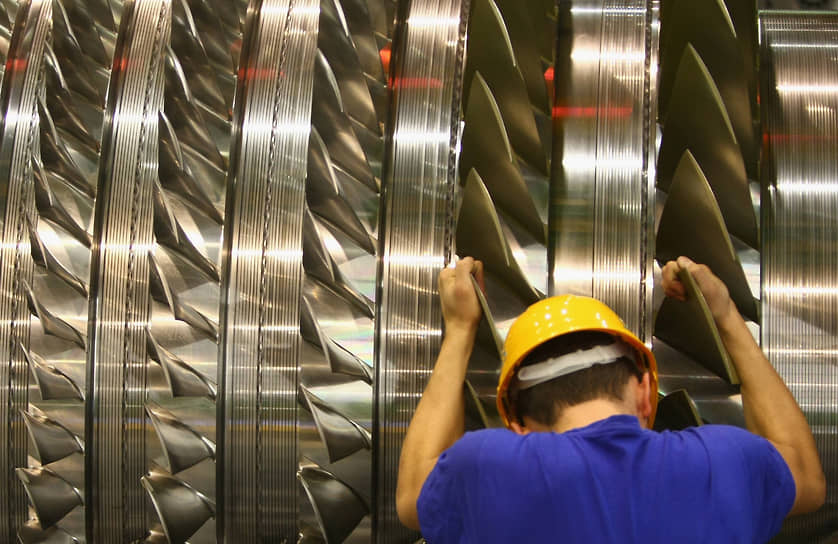Germany on the verge of gas supply emergency
Mon 5:37 am +01:00, 11 Jul 2022The return of equipment by Canada does not guarantee an increase in gas pumping to the EU.
Vice-Chancellor and Economics Minister Robert Habek told Bloomberg that he would be the first to support further tough EU sanctions. “But tough sanctions should harm Russia and (Russian President Vladimir . — Kommersant ) Putin more than our economy,” he stressed.
According to Kommersant, the transportation of the repaired gas pumping unit of the German Siemens Energy for Nord Stream from Canada may begin as early as mid-July. Its delivery to Russia via Germany will take up to two weeks. Canadian officials have confirmed that they will temporarily lift sanctions on Gazprom equipment. However, the question of how much Gazprom will increase pumping through Nord Stream after the return of the turbine remains open: it is still unclear where the remaining cars will be repaired.

Canada’s decision to return the delayed Gazprom turbine gives Germany hope, but not a guarantee of increased supplies via Nord Stream
Photo: Sean Gallup/Getty Images
Canada’s decision to return the delayed Gazprom turbine gives Germany hope, but not a guarantee of increased supplies via Nord Stream
Photo: Sean Gallup/Getty Images
The dispatch from Canada of a gas compressor unit (GCU, consists of a compressor and a gas turbine) by Siemens Energy for the Portovaya compressor station, which pumps gas into Nord Stream, will tentatively take place after July 14, according to Kommersant’s interlocutors familiar with the situation. Now the machine, according to them, is still being tested in Montreal, where the repair shop of the British Industrial Turbine Company Limited (ITCL), owned by Siemens Energy, is located.
It is most likely that the GPU will be sent by sea first to Germany and then to Russia, and its transportation may take about two weeks. Thus, the cars can arrive in Russia after the completion of technical work on the Nord Stream, which will take place from July 11 to 21. It may take a few more days to install the GPU.
In theory, after this, gas pumping through the Nord Stream should increase by at least 20%, that is, up to 100 million cubic meters per day.
Siemens Energy reported that they could not confirm Kommersant’s data on the date of shipment of the equipment, redirecting the request to the Canadian authorities. On the evening of July 10, the company released a statement that it plans to “deliver the turbine to the site as soon as possible.” In “Gazprom” “Kommersant” did not answer.
The fact that Canada agreed to send a turbine for the Nord Stream gas pipeline to Germany was announced on July 10 by the country’s Minister of Natural Resources, Jonathan Wilkinson. “Canada will grant Siemens Canada a time-limited and revocable authorization to return the repaired Nord Stream turbines to Germany,” the minister said in a statement. The export permit for the turbine was issued after extensive discussions with “European friends and allies” as well as the International Energy Agency.
Canada imposed sanctions against Gazprom for the start of hostilities by Russia in Ukraine, which served as the basis for a ban on the export of GPUs. In addition, the turbine was based on Rolls-Royce aircraft engines, which gave Canada a reason to classify it as a dual-use product.
In response, Gazprom said that it was forced to stop the operation of several Siemens gas turbine engines due to the end of the time between overhauls before overhaul. As a result, pumping through the Nord Stream from the night of June 16 decreased to 67 million cubic meters per day, or 40% of the nominal capacity of the pipe.
It is not yet clear whether repairs to other turbines for Portovaya in Canada will continue. Since an aircraft engine became the basis for this type of turbine, the number of workshops where it can be repaired is limited in the world.
As the interlocutors of Kommersant explain, Siemens Energy is responsible for servicing this equipment, and Gazprom, in fact, does not care where the German company will repair them, as long as the repairs are carried out. Otherwise, supplies via Nord Stream will be reduced. The company expects that the remaining faulty units will be repaired within a year.
German officials urged Canada to find a way to return Gazprom equipment that fell under sanctions, fearing that Russia, under this pretext, could completely stop Nord Stream in July (this will happen during the repair, that is, from July 11 to 21), not allowing Germany to fill gas storage facilities before winter. Thus, Vice-Chancellor and Economics Minister Robert Habek told Bloomberg that he would be the first to support further tough EU sanctions. “But tough sanctions should harm Russia and (Russian President Vladimir . — Kommersant ) Putin more than our economy,” he stressed.
It remains unclear whether Gazprom intends, in accordance with the usual practice of past years, to increase gas supplies to Central and Western Europe via other routes during the period of the complete shutdown of Nord Stream for repairs.
At the moment, the company has, in fact, the only alternative – a route through Ukraine. Although Naftogaz Ukrainy refuses to accept gas at the Sokhranivka gas metering station, Gazprom, according to the contract, could increase pumping through the second supply point Sudzha to 80 million cubic meters per day. So far, the company, apparently, does not intend to do this – the application for Suju on July 11 remains at the level of previous days (41 million cubic meters).

https://www.kommersant.ru/doc/5457783?utm_source=newspaper&utm_medium=email&utm_campaign=newsletter










